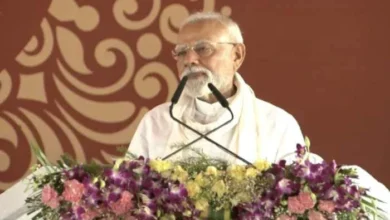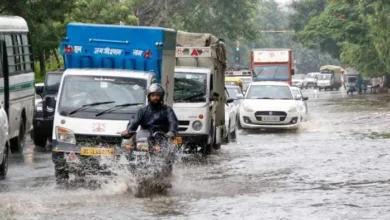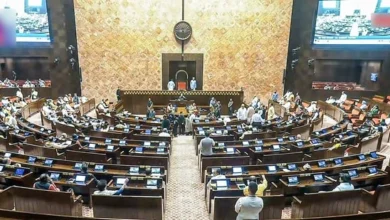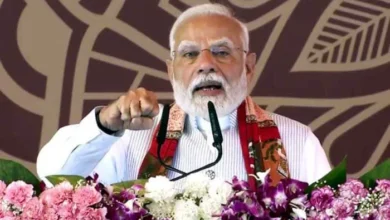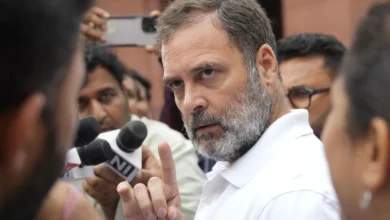With PM Modi 11-Year Legacy, A New India Rises On The Horizon Of 2047

Over the past 11 years (20142025), the Narendra Modi-led government has steered India through a period of significant change, reshaping its economy, infrastructure, security, and global standing.
With a focus on bold reforms, inclusive growth, and forward-looking policies, India has emerged as a major player on the world stage. As the nation sets its sights on 2047, the centenary of its independence, the achievements of the last decade provide a strong foundation, while challenges like ease of doing business and global integration remain critical for sustained progress.
Indias economic journey since 2014 has been remarkable. The countrys GDP has grown from USD 2 trillion to USD 4.2 trillion, propelling it from the 10th to the 4th largest economy globally, surpassing Japan. Forecasts suggest India will overtake Germany to become the third-largest economy in the coming years. With an average growth rate of 6.4 percent since 2014 and 7.4 percent in the latest quarter, India has been the fastest-growing major economy for four consecutive years, earning praise from the World Bank and the World Economic Forum, which sees India as a key driver of global growth.
Per capita income has risen steadily, reflecting improved living standards. Exports have surged, supported by policies promoting manufacturing and trade. The tax base has expanded significantly, with direct tax collections rising by 248 percent. The Goods and Services Tax (GST), introduced in 2017, unified the countrys fragmented tax system, boosting revenue and simplifying compliance. Simplified regulations and the removal of outdated laws have further strengthened the economic framework, creating an environment conducive to growth.PM Modi
National security
The Modi government has redefined Indias approach to national security, adopting a zero-tolerance policy toward terrorism. The doctrine that terror attacks will be treated as acts of war has become the cornerstone of Indias security strategy. Operation Sindoor, launched in response to the Pakistan-sponsored terror attack in Pahalgam on April 22, exemplifies this proactive approach, with India striking at the source of terrorism. This shift has instilled confidence in the nations ability to protect its sovereignty.
Significantly, the fight against Left-Wing Extremism (LWE) has also seen a major success. The number of districts affected by Naxal violence has plummeted from 126 to 18, with top LWE leaders neutralised. The abrogation of Article 370 in 2019, which revoked the special status of Jammu and Kashmir, has been a landmark move, nurturing greater integration with the rest of India. Social reforms, such as the outlawing of Triple Talaq and the passage of the Waqf (Amendment) Bill, underscore the governments commitment to bold, inclusive governance.PM Modi
Infra boost
The last 11 years have witnessed an unprecedented push in infrastructure development, transforming connectivity and accessibility across the country. The road network has expanded significantly, with over 90,000 km of highways constructed or upgraded. The Bharatmala Pariyojana, a flagship initiative, has connected remote regions, boosting trade and mobility. The railway sector has undergone modernisation, with high-speed corridors like the Mumbai-Ahmedabad bullet train and the electrification of over 90 percent of railway lines. The Vande Bharat trains, now operating on multiple routes, have reduced travel times and enhanced passenger comfort.
The UDAN (Ude Desh ka Aam Nagrik) scheme has revolutionised air travel, making it accessible to smaller cities. Over 150 airports and airstrips have been operationalised, with passenger traffic doubling since 2014. Urban infrastructure has also received a major boost through the Smart Cities Mission, which has developed 100 cities with modern amenities, improved public transport, and sustainable urban planning. These efforts have laid the groundwork for a more connected and efficient India.
Digital infrastructure
Indias digital revolution has been a game-changer, redefining governance and access to services. The Digital India initiative has driven the creation of robust digital public goods, such as the Unified Payments Interface (UPI), which handles over 50 percent of global financial transactions by volume. Aadhaar, the worlds largest biometric identification system, has streamlined welfare delivery, ensuring benefits reach the intended recipients. The JAM trinity (Jan Dhan, Aadhaar, Mobile) has empowered millions by providing access to banking, direct benefit transfers, and digital services.
E-governance platforms like DigiLocker and MyGov have enhanced transparency and citizen engagement. The National Broadband Mission has expanded high-speed internet access to rural areas, bridging the digital divide. With over 1.2 billion mobile phone users and 900 million internet subscribers, Indias digital infrastructure has become a model for the world, enabling seamless access to education, healthcare, and financial services.PM Modi
Clean energy
Indias focus on clean energy has positioned it as a global leader in the fight against climate change. Solar capacity has soared from 2.82 GW in 2014 to 105.65 GW, with total clean energy capacity reaching 228.28 GW. This makes India the third-largest solar power producer and the fourth-largest in wind energy globally. The International Solar Alliance, spearheaded by India, has galvanised global efforts to promote solar energy.
The Smart Cities Mission integrates sustainable practices, with cities adopting solar-powered streetlights, energy-efficient buildings, and waste-to-energy plants. The PM Suryaghar Free Electricity Scheme has encouraged rooftop solar installations, reducing dependence on fossil fuels. Investments in green hydrogen and wind energy further demonstrate Indias commitment to a sustainable future, aligning with global climate goals.
India @ 2047
As India approaches 2047, the centenary of its independence, it is crafting an ambitious roadmap to become a developed nation. The foundation laid over the past decadethrough economic reforms, infrastructure growth, and digital innovationprovides a springboard for this vision. However, challenges remain. Enhancing the ease of doing business is critical to attracting investment and fostering entrepreneurship. Streamlining compliance requirements and reducing bureaucratic hurdles will boost Indias competitiveness on the global stage.
Integration into global supply chains is another priority. Initiatives like Make in India and Production-Linked Incentive (PLI) schemes have strengthened domestic manufacturing, but further efforts are needed to make India a global manufacturing hub. Skilling the workforce to meet the demands of emerging industries, such as artificial intelligence, renewable energy, and advanced manufacturing, will be crucial. Investments in research and development, coupled with innovation-driven policies, will drive long-term growth.
Sustainability will remain a cornerstone of Indias development. Expanding renewable energy capacity, promoting green technologies, and adopting climate-resilient practices will ensure environmental and economic resilience. Inclusive growth, with a focus on uplifting marginalised communities, improving healthcare, and ensuring quality education, will be vital for balanced progress.
The Modi governments 11-year tenure has revitalized Indias trajectory, placing it firmly on the path to becoming a global powerhouse. Economic growth, infrastructure development, and digital innovation have strengthened the nations foundation, while decisive security measures and social reforms have addressed long-standing challenges. As India looks toward 2047, the focus must remain on agile policymaking, sustainable development, and deeper global integration. With its young population, vibrant democracy, and dynamic leadership, India is well-positioned to shape the global development agenda in the decades to come.
